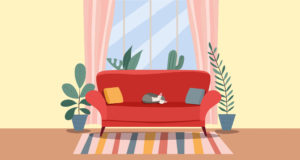
What Is Space and Place Knowledge?
Space and place knowledge includes understanding:
- Where things are. Near or far? Above or below other objects? Right or left?
- How to move around the world to get from one place to another.
Why Is Learning About Space and Place Important?
Thinking about space and place helps us every day as we:
- Plan the best route to school.
- Remember where we left our keys or backpack.
- Use a map to get to a new place.
What Do Children Need to Know About Space and Place?
- Spatial words that describe positions, like between, behind, on top.
- How to use maps and diagrams, like reading a map to get to a friend’s home.
- How objects or scenes look from different places. “What would you see if you moved to the other side of the room?” This is called perspective taking.